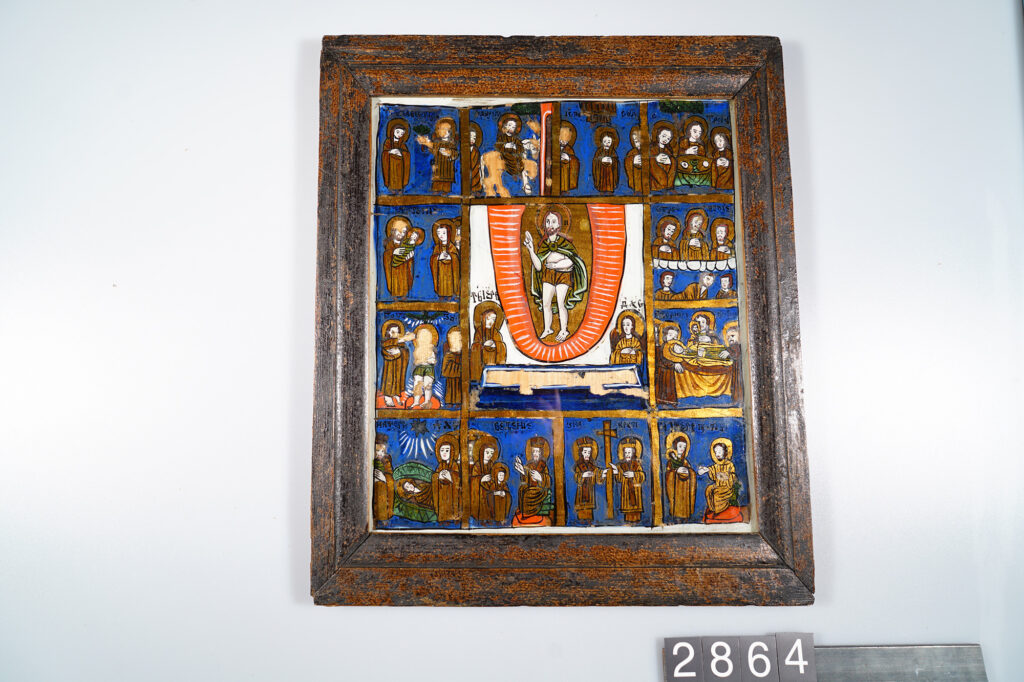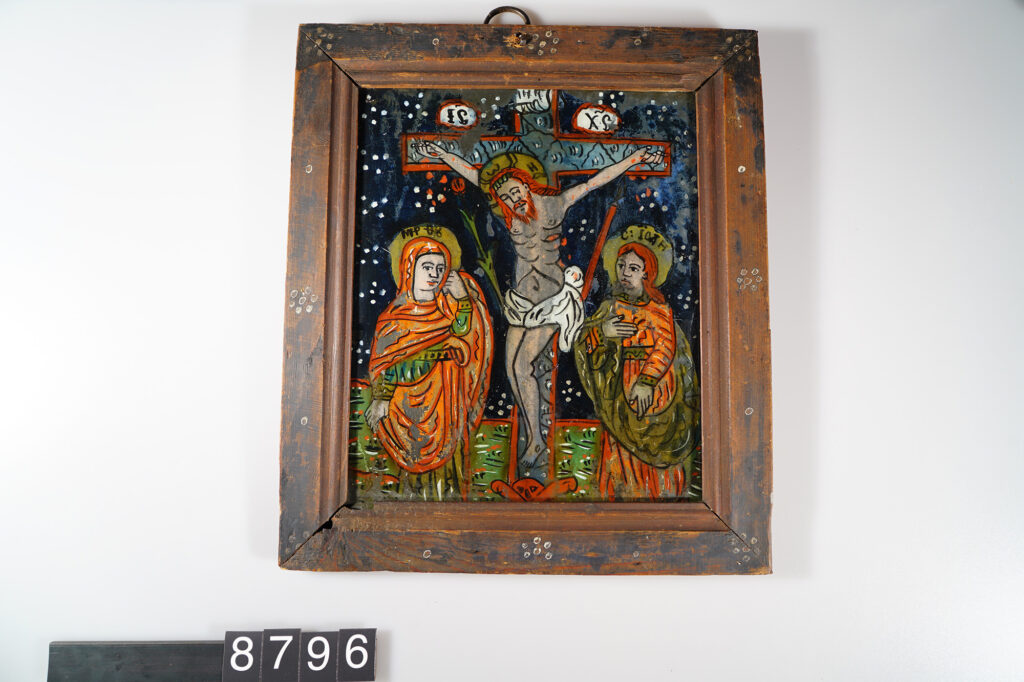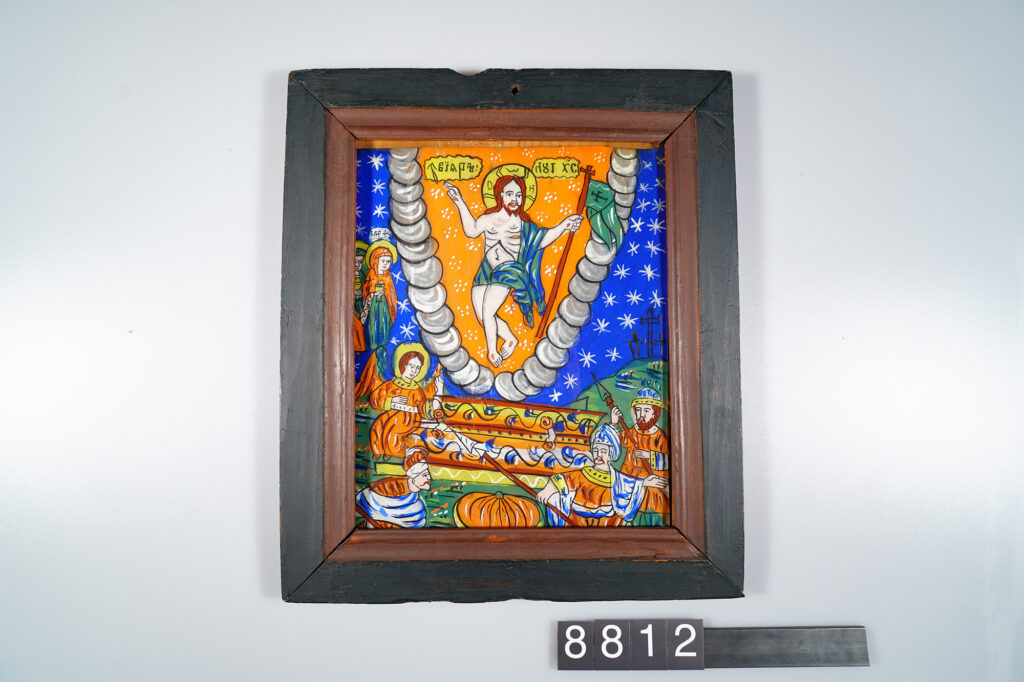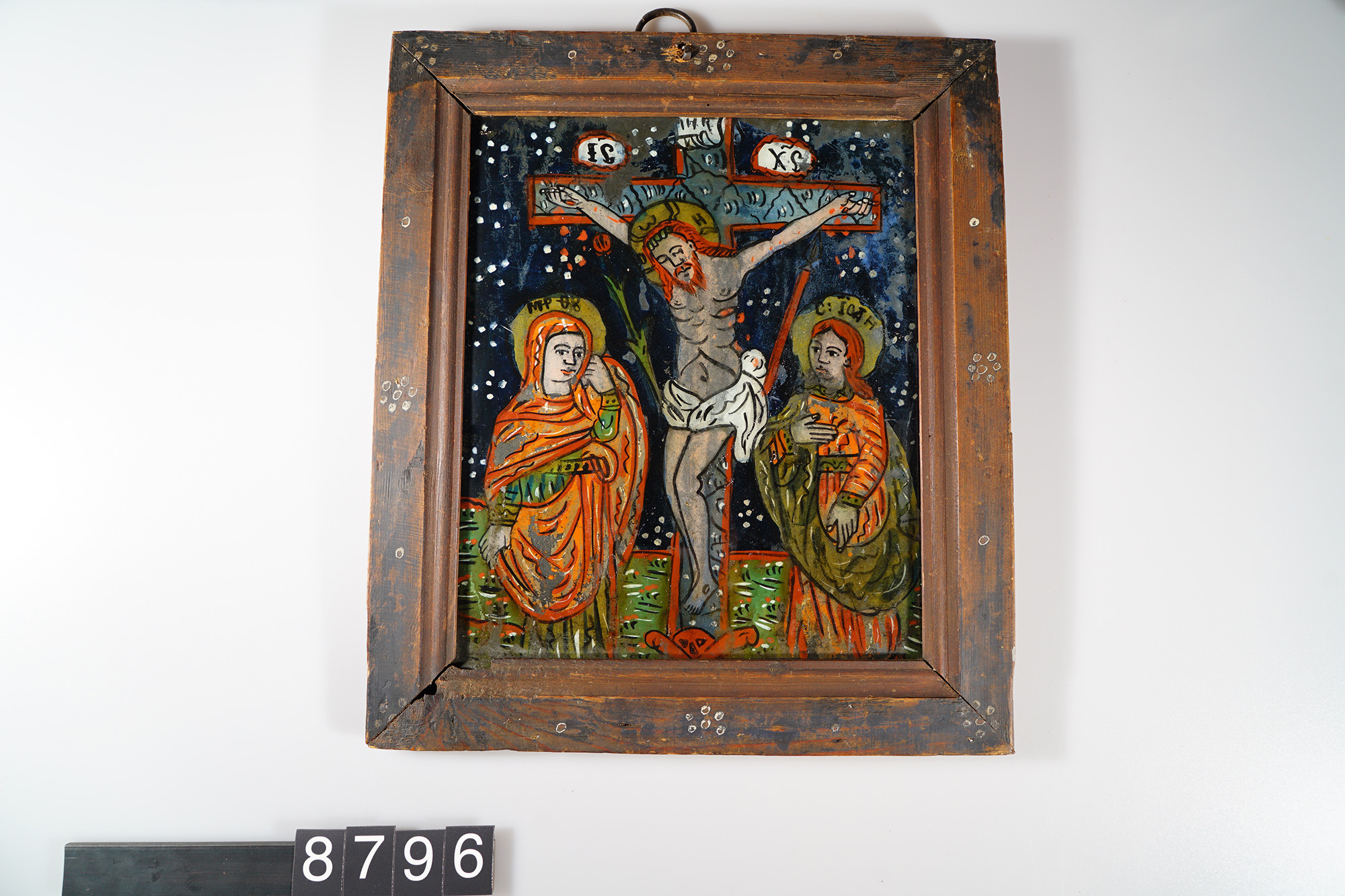Also called the Easter Holiday, the Lord’s Resurrection is the oldest and greatest holiday of Christendom, which has brought mankind the hope of salvation and eternal life through the sacrifice of Jesus Christ. It is the celebration of the joy given by the news of the Savior’s Resurrection. A news that, until the Ascension of the Lord, respectively 40 days, is found in the greeting “Christ is risen!”, to which it is answered with “Indeed He is risen!”
A few days after the Palm Sunday (Christ’s triumphal entry into Jerusalem), Jesus was judged and crucified, died on the cross, and was laid in a tomb. Three days later, he rose from the dead. All of these events took place during Holy Week.
We present three icons related to this holiday, two of them represent the Resurrection and one the Crucifixion of Jesus. The icon with inventory number 2864 represents the Resurrection and is dated to the second half of the 19th century. It belongs to the Laz iconography centre, with Ilie I Poienaru as its author. As a material and technique, the outline is drawn with ink on the back of the glass (thin, irregular, hand-made glass) with the pen, following a model. Surface painting is done with tempera. Gold foil was applied. The resinous frame is profiled and stained. In size, the icon is 46.2 cm x 38.4 cm. The icon with inventory number 8812 represents the Resurrection and is dated to the second half of the 19th century. It belongs to the Lancrăm icon centre. As a material and technique, the outline is drawn with ink on the back of the glass (irregular thin glass, made by hand) with a pen or brush, following a model. Surface painting is done with tempera. The resinous frame is profiled and stained. In size, the icon is 42 cm x 37 cm. The third icon, with inventory number 8796, represents the Crucifixion and is dated to the second half of the 19th century. It belongs to the Laz icon centre. As a material and technique, the outline is drawn with ink on the back of the glass (thin, irregular, hand-made glass) with a pen or brush, following a model. Surface painting is done with tempera. The resinous frame is profiled, stained and decorated with floral motifs. In size, the icon is 44 cm x 38.6 cm.
The exhibition is organized within the project Innovative techniques in cultural heritage valorisation. Icons from the Sebeș Valley from the collection of the Transylvanian Museum of Ethnography, a project implemented by the Transylvanian Museum of Ethnography as a promoter, in partnership with the Technical University of Cluj-Napoca and the Norwegian association NUDA AS, funded by the EEA Grants 2014-2021, within the RO -CULTURE Programme.
The icon can be admired within the mentioned exhibition, at the museum’s headquarters, Reduta Palace, Memorandum Street no. 21, Cluj-Napoca.



